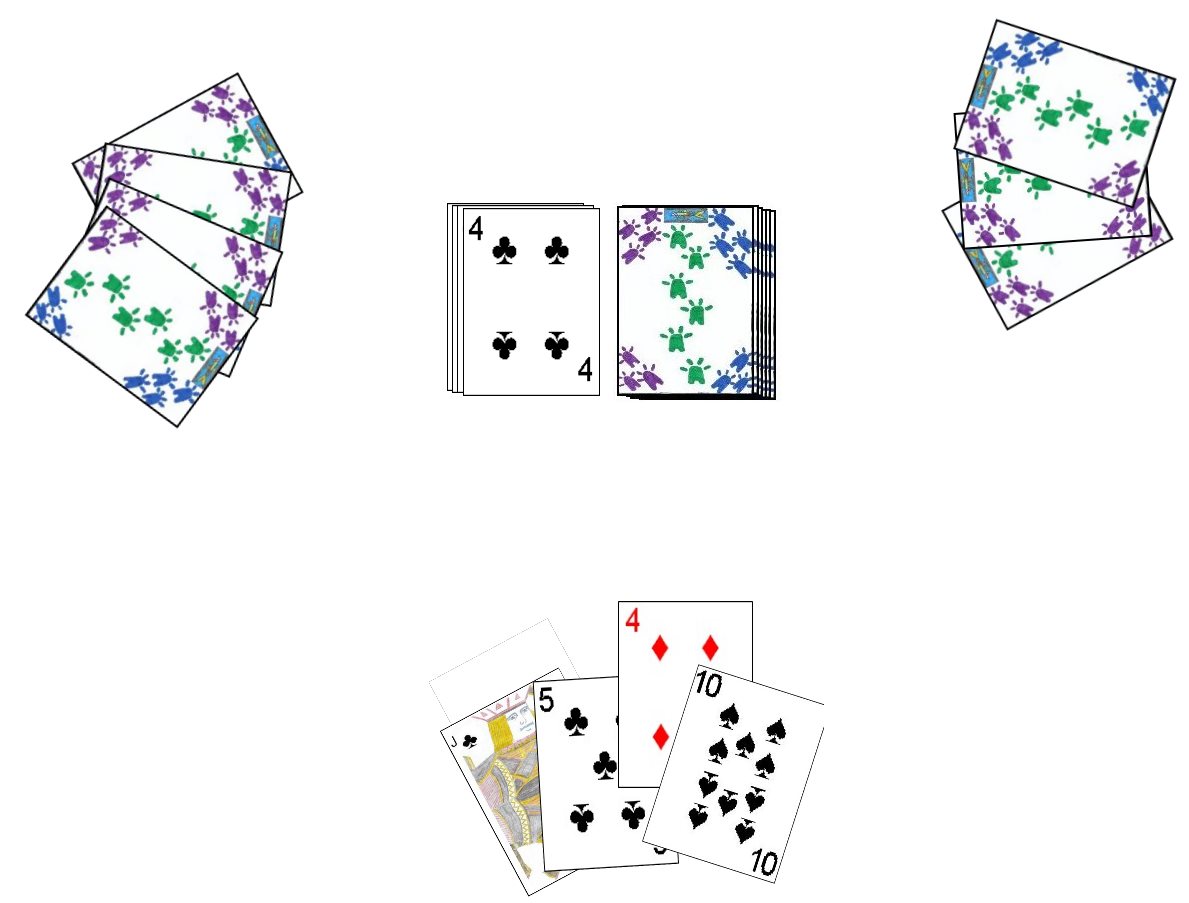How to Play the Card Game Pitty Pat
|
|
Pitty Pat is a card game that is originally from the small Central American country of Belize. In fact, this game is often cited as the national card of that country, although it is relatively unknown outside that region. Although commonly thought of as a children's game, it can, and is, often played by card players of all ages. Despite the fact that it may not be obvious at first, this game is actually related to the Rummy family, with some similarities to Conquien (Coon Can). This will be particularly evident if the playing of cards to the discard pile can be thought of as melds and discards.
 The standard game is designed to be played by two to four players. The game is played using one standard 52 card deck with no real relative card ranking necessary amongst the cards in this game.
The standard game is designed to be played by two to four players. The game is played using one standard 52 card deck with no real relative card ranking necessary amongst the cards in this game.
Before play begins, the first dealer should be determined. The usual method to do this is for any player to begin dealing cards from the shuffled deck face up to each player on at a time. The first player to receive any Jack becomes the first dealer. If there is any dispute as to seating positions, the players can all draw one card from the shuffled deck with the players selecting a seat at the table in the order of rank of cards drawn, from highest to lowest.
Once the first dealer is determined, the deck should be thoroughly shuffled by him and cut by the player at his right. After the cut, the dealer then begins dealing the cards face down and one by one in a clockwise direction starting with the player to his immediate left. He continues until each player (including himself) has a hand consisting of five total cards. He then places the remainder of the deck face down in a pile in the center of the table. This is the stock pile. After doing this, he takes the top card of the stop pile and places the card face-up beside the stock pile to start the play pile. Play then begins with the player to the dealer's immediate left and rotates in a clockwise direction around the table from player to player.
On a player's turn, he examines his hand and has two possible plays, as follows:
If, at the start of his turn a player has a card of the same rank as the current top card of the play pile he may play that card from his hand to the top of the play pile. After playing a card, the player then selects any other card of his choice from his hand and places it on the top of the discard pile, ending his turn.
If however, on the player's turn, he does not have a card in hand that matches the current top card of the discard pile, he must take the top card of the draw pile and place it on the top of the discard pile. If that player has a card matching this new card he may play it to the discard pile from his hand and then may play any other card of choice from his hand, which ends his turn. If he does not have a card matching the new card exposed, his turn also ends.
If a player plays the last card from his hand during his turn he wins the hand and earns one point. Also, if a player, during his turn finds that his hand consists of exactly two cards, and these cards are of the same rank he shows them and wins the hand, also earning himself one point.
The first player to earn five total points is declared the game winner.
Copyright © 2015 CatsAtCards.com. All rights reserved.
 The standard game is designed to be played by two to four players. The game is played using one standard 52 card deck with no real relative card ranking necessary amongst the cards in this game.
The standard game is designed to be played by two to four players. The game is played using one standard 52 card deck with no real relative card ranking necessary amongst the cards in this game.